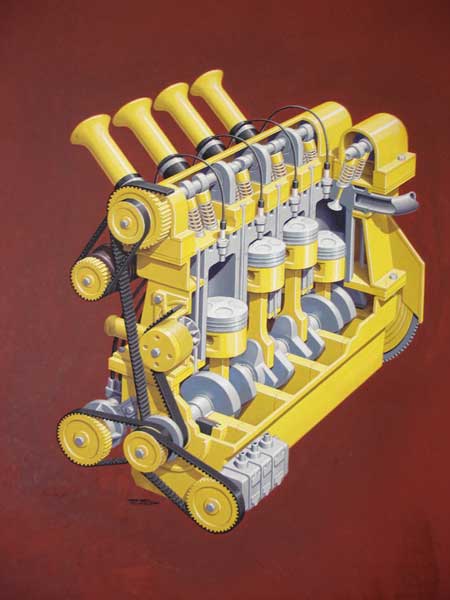Composites
There are a wide range of materials used in the racing powertrain, but although much progress has been made since man started motor racing more than a century ago, the vast majority of a modern race engine and transmission is still made of metal.
However, this has been slowly changing for some time. Currently there are few applications of composites in race engines, although development is limited in many cases by regulation. In the past decade we have seen various engines sporting carbon-reinforced polymer cam covers, water pipes, heat shields and various other non-structural covers.
Polymer matrix composite (PMC) materials - where, as the name suggests, a reinforcement is used in conjunction with a polymer matrix - are becoming more popular all the time. The mid-1980s Polimotor was a fantastic piece of design, incorporating all manner of stressed engine components in reinforced polymers. From 'composite castings' through piston skirts, con rods and valvetrain components, this competition engine didn't receive the ongoing development budget it really deserved.
Almost 30 years later, it still stands as the pinnacle of polymer composite materials development for engines*. The technology of composite castings is still being actively developed, and recently large structural components - including cylinder blocks for racing - have been produced in a carbon-reinforced composite material, and these are available commercially.

In terms of polymer composite transmission cases, the story is very different. Formula One teams have used full carbon fibre gearbox main cases for over a decade now, and various parts of Formula One transmission cases have been made from the material for more than 15 years. As with the fully PMC chassis, the technique of using carbon fibre for transmission cases was pioneered by John Barnard. Strangely, the technique seems to ebb and flow in terms of popularity; various teams have produced and used carbon fibre gearbox cases and then reverted to metallic cases again.
The case for metallic cases is still strong, as many people understand metallic materials and the processes required to make a sound structural casting. The process of making carbon fibre reinforced gearbox cases is difficult and requires great attention to detail in the design and manufacturing stages to ensure success. However, the rewards are potentially great. If properly designed, a stiffer structure is possible for the same mass as a metallic case, and high stiffness is one of the primary aims of the design of a modern single-seater racecar.
There is a widespread misconception that, where a part can be manufactured successfully from PMCs, it will perform better than a metallic part. This is not necessarily true; because of their structure the load transfer through composites is not straightforward, and an understanding of how these parts behave in practice is the key to designing, manufacturing and using structural composite components.
As the saying goes, you need to choose your battles wisely - that is, don't try to replace everything metallic with PMCs; choose the parts that are within your capabilities and which will bring most benefit.
* Stowe, J., 'Focus' article on the Polimotor, Race Engine Technology, issue 56, August 2011
Fig. 1 - The Polimotor project of the early 1980s remains the pinnacle of polymer-matrix composite use in engines. The yellow components were made of polymer-matrix composites
Written by Wayne Ward